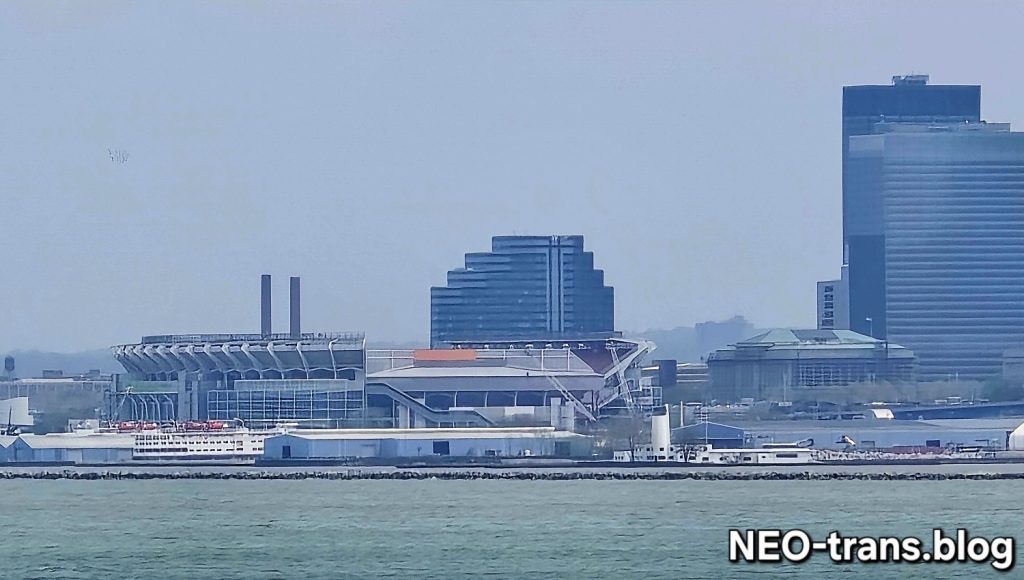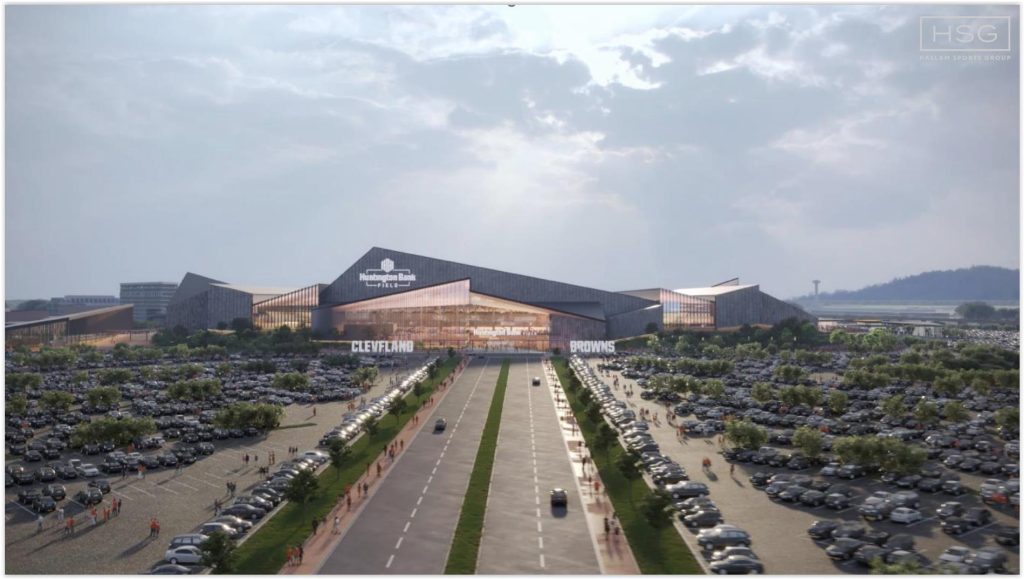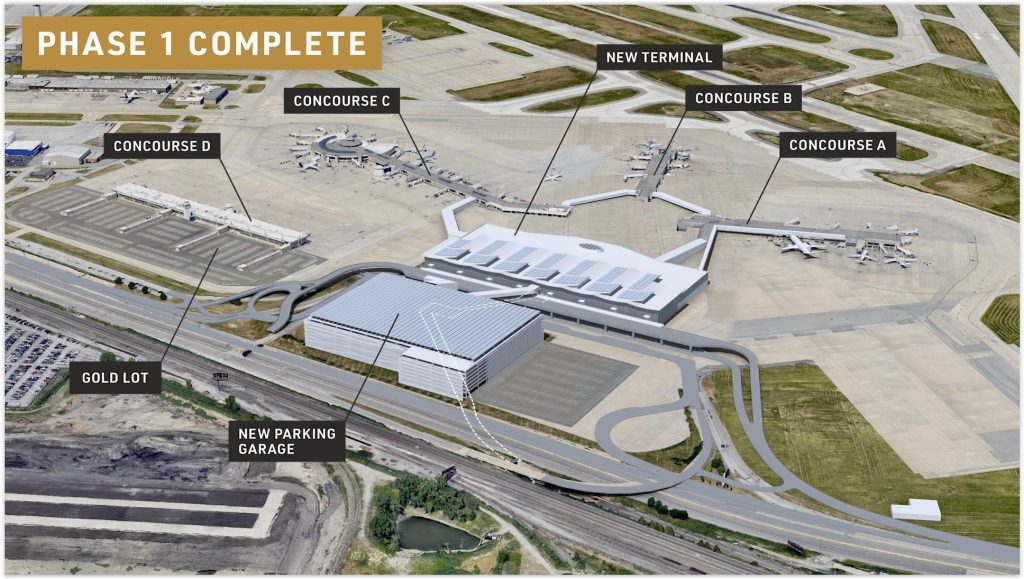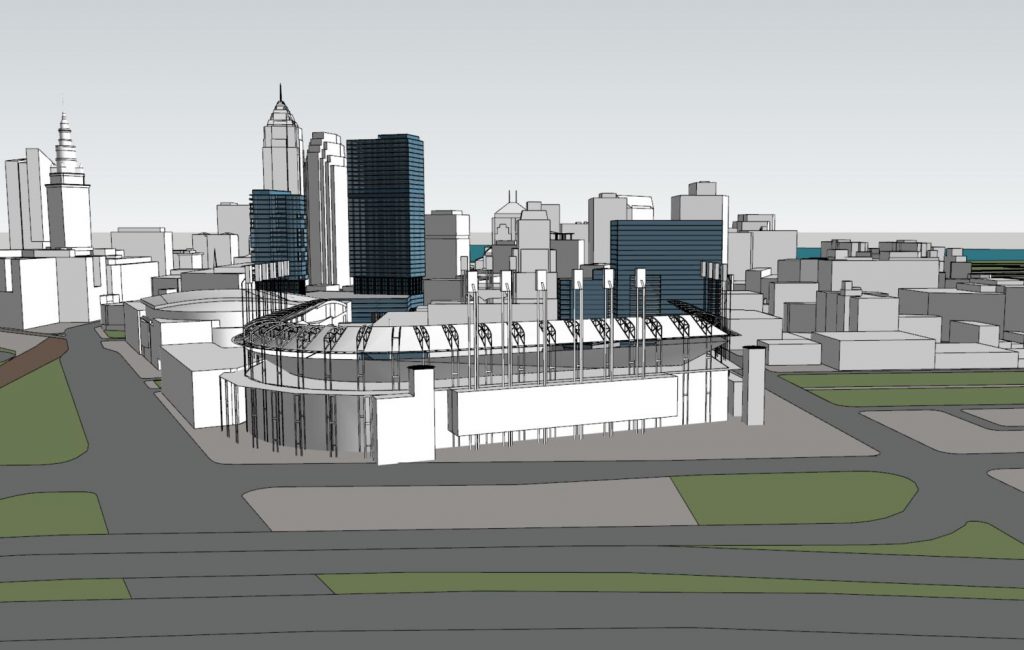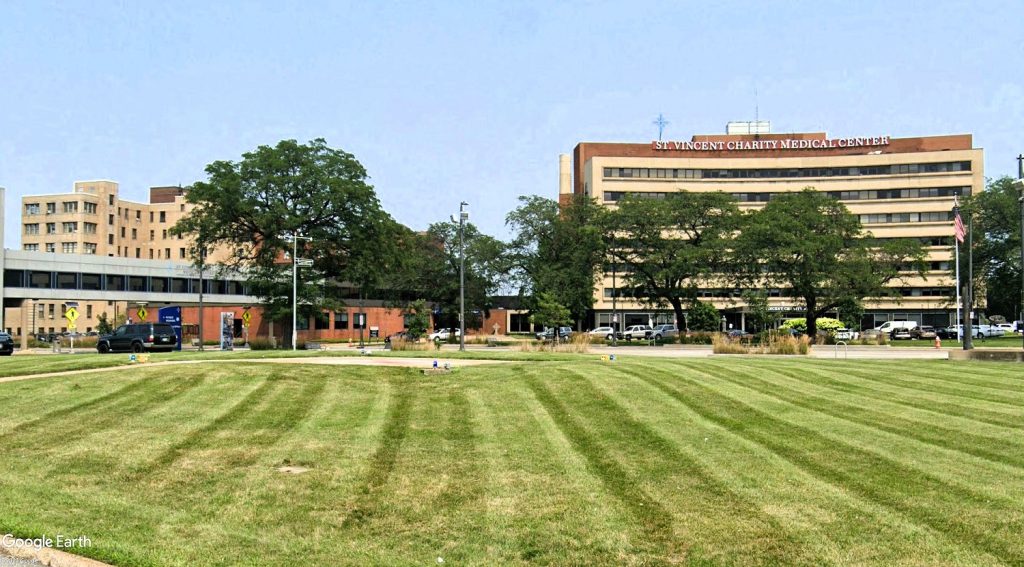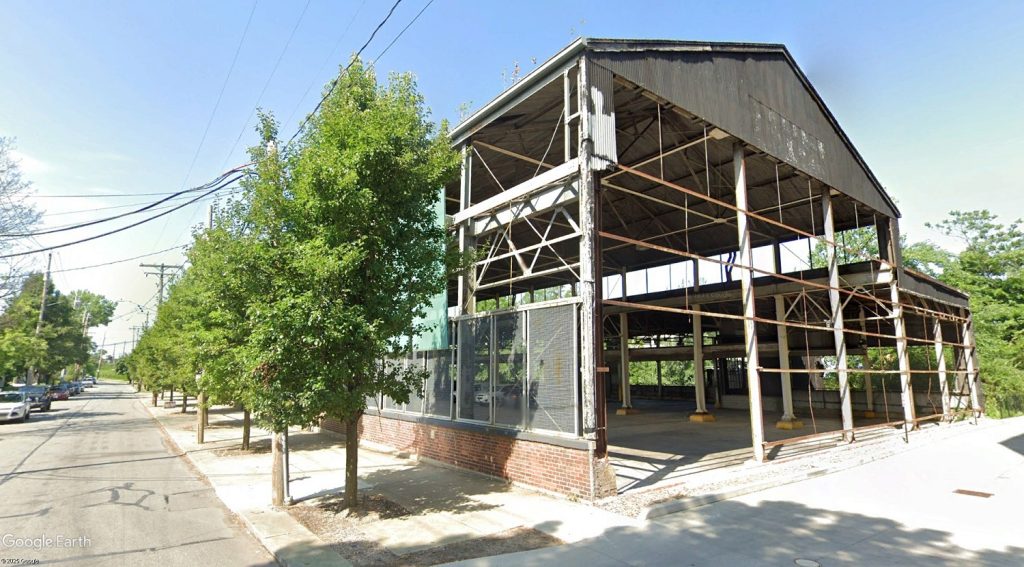GCP likes lakefront better without stadium, airport

Downtown Cleveland’s lakefront has had a stadium on it for 91 of the last 93 years. But that should come to an end for the betterment of the lakefront and its replacement stadium, according to the Greater Cleveland Partnership (GCP) — the metro area’s chamber of commerce. GCP also urged the closure of Burke Lakefront Airport.
GCP came to those conclusions after more than six months of deliberation. NEOtrans broke the story in December 2024 that GCP’s board was taking input from Cleveland Mayor Justin Bibb, City Council President Blaine Griffin, then-Cuyahoga County Council President Pernell Jones Jr. and Cuyahoga County Executive Chris Ronayne about the stadium debate.
But Dee Haslam, co-owner of the Haslam Sports Group (HSG) with her husband Jimmy Haslam, serves on GCP’s executive committee and pre-empted the appearance of those public officials with a letter sent the the day before to the GCP Board.
She asked the 70-member board of the region’s corporate CEOs and presidents to side with HSG, owners of the Cleveland Browns, in building a planned $3.6 billion enclosed stadium and supportive development on Snow Road in suburban Brook Park.
In December, at least one GCP board member was reportedly prepared to offer a motion in support of the city and county, according to a source who spoke on the condition of anonymity. But the GCP board voted unanimously in its policy position announced today.
City and county officials responded to GCP’s decision today with disappointment, but said they weren’t surprised considering Haslam’s seat on the board. GCP countered that her role in the decision was minimized.
“Greater Cleveland Partnership (GCP) is committed to both world-class stadiums and world-class waterfronts,” the organization said in a written statement today. “After extensive discussions, the GCP Executive Committee, with recusals for conflicts, endorses a domed stadium that anchors a mixed-use development in Brook Park as well as support for all our professional sports facilities.”
GCP also asked all parties to work together for accelerated development of a vibrant downtown lakefront and riverfronts. And it pledged to work with public officials and HSG on both the waterfronts and the Brook Park stadium development, calling them “transformational opportunities” to provide long-term benefits to the region.
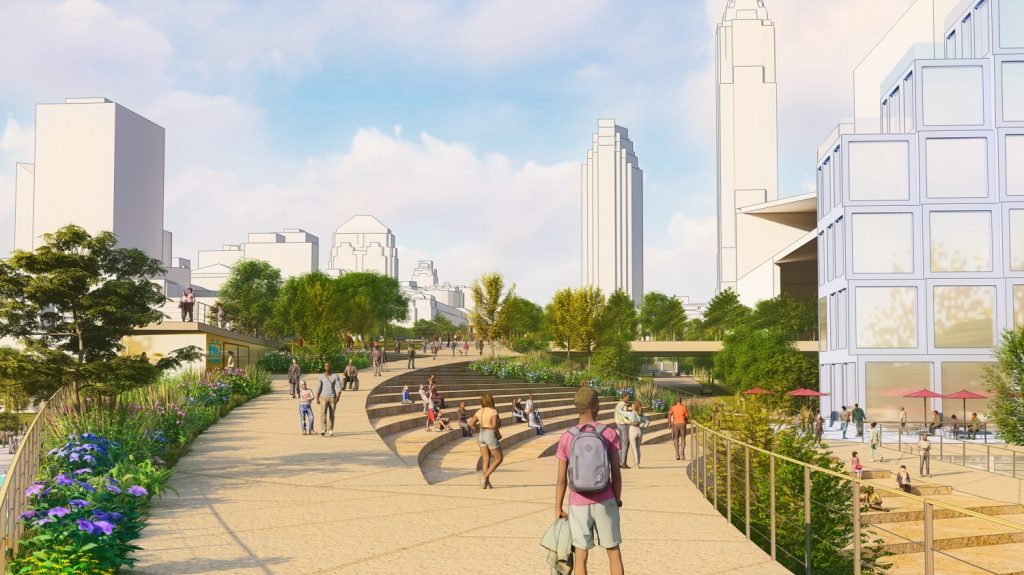
The Haslam Sports Group originally was the impetus behind the city of Cleveland’s lakefront redevelopment plan under Mayor Frank Jackson. But HSG backed out of it under Mayor Justin Bibb, apparently after structural studies of the existing stadium and seeing the city’s recreation- and public-space-heavy plans that allowed for little development (FO).
Specifically, GCP asked all parties, including HSG, Cleveland, Brook Park and county officials to create a revenue-sharing mechanism to support a larger, mixed-use, lakefront development than what is possible now with the stadium — and Burke Lakefront Airport — on it.
“With the parties working together, we believe more than $150 million of additional funding is possible from a combination of revenue-sharing from a new stadium and team contribution to the city of Cleveland,” GCP’s statement read. “The city can use such funding as an additional incentive to initiate another billion-dollar-plus development on prime property.”
“Finally, GCP remains committed to working with the city and all partners to secure the closure of Burke Lakefront Airport,” it added.
Right around the same time that the Haslams’ negotiations with the city of Cleveland and county officials soured, Cleveland publicly released its studies about what might be needed to close Burke Lakefront Airport. The closure costs increased to a minimum of $25 million if the shutdown timeline was decreased to as little as five years.
A month later, renderings of what a domed stadium and supportive development built on the site of Burke were released anonymously to NEOtrans and other media. But an HSG spokesperson said the possibility of closing Burke was too uncertain, the costs of replacing Burke with a stadium were too high and the timeline was much longer than building in Brook Park.
Because of Burke’s site conditions — landfill set atop submerged land under Lake Erie — a stadium footprint would need to be 25 percent larger than the Brook Park stadium. The larger footprint is necessary to spread the stadium’s weight, according to an HSG memo.
Because of that, the Burke domed stadium was estimated to cost $3.3 billion compared to $2.4 billion for the Brook Park stadium. That doesn’t include stadium-area developments like hotels, restaurants, shops, apartments and offices.
“While a downtown dome is ideal, financial and development constraints have been challenging; the Brook Park option is more practical to move forward,” GCP added. “The additional events, and expected growth in live entertainment, are an economic opportunity for the entire region.”
“We also recognize the opportunity to connect this development to the bold ‘CLEvolution’ of the airport and ask all parties to support alignment and infrastructure for these projects,” GCP continued.
An HSG spokesperson said there has been no planning for a physical connection between Cleveland Hopkins International Airport and the Brook Park stadium development. Such a connection could involve an enclosed walkway over State Route 237 and the Norfolk Southern railroad tracks.
If there was, Greater Cleveland would have the first National Football League stadium in the country in which you could walk from your airplane seat to your stadium seat without going outside.
A new airport parking deck, ground transportation center and new Rapid transit station are planned next to State Route 237 — just over 1,000 feet from the new stadium. And it would also offer 6,000 parking spaces priced beyond HSG’s control.
END

